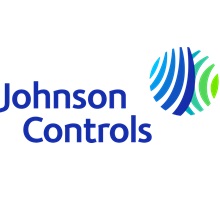Differentiating PFAS Series: Industry Assessment of Trifluoroacetic Acid (TFA) and the PFAS Problem
Trifluoroacetic acid (TFA) actually meets the definition of PFAS because it has a CF3 radical on the molecule. Researchable comments exist regarding the fate of trifluoroacetic acid, like from Columbia Climate School Center. The source of the currently observed levels is unknown and puzzling according to them. In 2001, the observed TFA concentrations were orders of magnitude larger than those predicted to result from the atmospheric degradation of the replacement of HCFCs and HFCs. The Columbia researchers noted that at the time FK-5-1-12 was not even commercialized.
Another collaborative study was conducted in 2002 and published in Environmental Science and Technology by the Environmental Laboratory in Seattle, Washington, the Department of Environmental Chemistry and Eco Toxicity in Germany, Scripps Institution of Oceanography, the University of California San Diego in La Jolla, and NOAA. The purpose of that study was to estimate TFA in ocean waters, given the material is strongly hydrophilic, and to assess whether today's levels are mainly from anthropogenic origin or whether biological or geological sources must be considered. Their conclusion at that time was that TFA is present in the global environment in two major compartments, in the ocean water and in the atmosphere, and in other areas, precipitation and fresh waters and so forth.
The study concluded that it is likely anthropogenic sources are a minor fraction. In any case, the total amount of TFA present in the global environment greatly exceeds what may be expected to be contributed from various industrial sources.
Another paper was published in the Journal of Toxicology and Environmental Health by Solomon. The conclusion of that study was based on current projections of future use of HCFCs and HFCs. The amount of trifluoroacetic acid formed in the troposphere from the substances regulated under the Montreal Protocol is too small to be a risk to the health of humans in the environment.
On the ECHA website, it says they consider trifluoroacetic acid to not be a PBT or a very PB PBT. Then it goes on to conflict with that statement by saying, though the available data indicates that trifluoroacetic acid is neither fulfilling the criteria for toxic and bioaccumulative substances, nor the criteria for very bioaccumulative substances according to Reach Directive and X 13, ECHA.
Bottom line, there is still much discussion about whether trifluoroacetic acid is even an issue and if it is, what to do about it. TFA ubiquitously exists in the environment, naturally, and that amount is orders of magnitude higher than what would be produced by industrial sources.
Looking for more education on PFAS? Videos are continuing to be added to the FSSA Differentiating PFAS Series playlist on YouTube. Subscribe to the FSSA channel for updates. FSSA members also have access to a variety of online resources and updates on PFAS. Not an FSSA member? Join today and your entire company gains access to the FSSA Annual Forum, publications and communications, complimentary webinars, discounted training programs and more!
Take advantage of the FSSA new member promotion for Installers, Manufacturers, and Suppliers. This one-time introductory membership price is valid for any new member company or returning member company that has not been active in the last three (3) consecutive years.



























Below are some additional references that may be of interest to FSSA members: Sources of TFA: In their 2014 assessment, the UNEP Environmental Effects Assessment Panel (EEAP), whose members include several of the most prominent researchers in the area of atmospheric chemistry, indicated that “More than 95\% of the salts of TFA found in the oceans are naturally produced” [UNEP, Environmental Effects of Ozone Depletion: 2014 Assessment, United Nations Environment Programme ISBN 978-9966-076-04-5]. The amount of TFA in the oceans has been estimated at 61-205 million tonnes, measured in the period 1998-2002 [Frank et al., Env. Sci. Tech. 2002, 36, p.12]. An inventory published in 2023, for the period 1930 to 1999, concludes that all significant anthropogenic sources of TFA have been accounted for in this period [Lindley, A., J. Geoscience & Env. Protection, 2023, 11, p. 1]. Industrial emissions of TFA for the period 1930 to 1999 were estimated as 0.23 to 0.47 million tonnes; hence, anthropogenic sources of TFA account for 0.11 to 0.78\% of the TFA found in the oceans (i.e., more than 99\% of TFA found in the oceans is from natural sources). Impact of TFA: With regard to the impact of TFA on the environment and humans, in their 2022 Assessment, the UNEP EEAP concluded that “The increases in trifluoroacetic acid concentrations due to replacements of the ozone-depleting substances are not expected to pose significant risk to humans or the environment at the present time” and “The margin of exposure between the distribution of No Observed Effect Concentrations (NOECs) and the observed and expected concentrations in the oceans and endorheic basins is several orders of magnitude and is indicative of de minimis risk” [UNEP EEAP 2022 Assessment Report, UNEP, March 2023. Environmental Effects of Stratospheric Ozone Depletion, UV Radiation, and Interactions with Climate Change]. With regard to its PFAS “status,” it should be noted that not all regulatory agencies consider TFA to be a PFAS. For example, the US EPA has indicated that “…most substances with only one terminal carbon (-CF3) are expected to degrade to trifluoroacetic acid, which is a well-studied non-PFAS” [National PFAS Testing Strategy: Identification of Candidate Per- and Polyfluoroalkyl Substances (PFAS) for Testing, October 2021, US EPA]. Mark L. Robin Technical Fellow The Chemours Company October 1, 2023